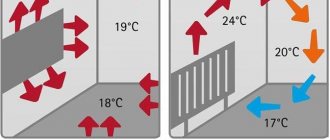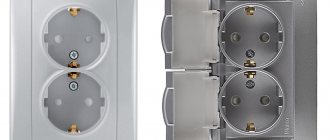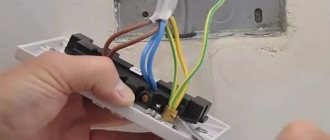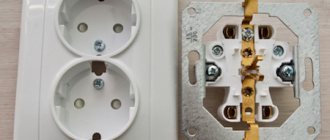Home→ Catalog→ Automation for ventilation→ Temperature regulators
Temperature meter-regulator TRM-1 for electric heaters
Triac temperature controllers MRT220
Triac regulators MRT380
Power blocks for electric heaters
Remote Control
Electromagnetic starters, non-reversible, enclosed with a thermal relay
HT Solid State Relay for Electric Heaters
Power expansion units for electric heaters
Voltage transformer TP20 for water heaters
Universal controller for controlling ventilation systems
Power supply unit for the universal ventilation system control controller
Technical catalogs
Order forms for selection
All necessary information can also be obtained by calling the hotline
+7 get advice
The ROVEN company offers to buy temperature controllers in Moscow at a competitive price. We invite you to visit our office at: Moscow, st. Yuzhnoportovaya, 7 building 7 of. 403
.
Call +7
, our specialists will answer all your questions.
How to use a thermostat
A photo of a thermostat for a heater allows you to determine that it looks like an adapter socket. The socket on its front side is designed for a household heater plug. On the back of the device there is its own plug, which is used to connect to the mains.
Obviously, using this thermostat is not at all difficult and in order to start using it, you do not need the help of a specialist.
The instructions for connecting a thermostat with your own hands are simple:
- Connect the thermostat to the heating device on one side and the electrical network on the other;
- Specify the temperature range that the user would like to maintain in this room.
Next, the device itself will provide heating to the required levels and will maintain the specified temperature in the space.
The principle of operation of the thermostat is the same for heating devices of any type, produced by all manufacturers. In this case, the power indicator of the heater being serviced is of significant importance; it is necessary that it is not greater than the power limit at which the thermostat is allowed to be used.
Why is it needed?
In autumn, when central heating has not yet been connected, heaters are often used in cold winter or early spring. The peculiarity of their work is that they require heating control. If the temperature in the room becomes normal, the device is turned off. As it cools down, connect it to the network again.
At the same time, everyone has their own comfort zone - some rest well at +18 degrees, others require a different regime. To maintain the required air temperature at all times, thermostats are purchased. They automatically turn off the heat source when a pre-selected temperature point is reached.
How does a thermostat work?
The thermostat contains a sensor that receives information regarding the temperature of the space being served.
If its value drops below the lowest temperature that the user has set as comfortable, then a reaction is triggered inside the thermostat; its mechanism can be a bimetallic plate or a relay that closes the circuit, as a result of which the heater is connected to the electrical network.
- As a result, this device begins to function and heats the space.
- At some point, the thermostat sensor detects that the room temperature has reached the upper limit of the specified range.
- Then the power grid is opened again, the heater is disconnected from the network and heating of the space stops for some time.
Principle of operation
Whatever type of device is purchased, the operating principle of thermostats is based on the same circuit. When the upper limit set by the user is reached, the electrical circuit opens.
The power supply is temporarily interrupted. When the heater cools down to a certain temperature, the group of contacts closes again. This makes it possible to create a microclimate that is comfortable for humans.
Advantages of thermostats
These devices provide the owner with the following benefits:
- Energy efficiency, with their use the owner can optimize energy consumption to maintain a comfortable microclimate in the house, since the thermostat will not allow heaters to heat the universe;
- Possibility of optimal settings with precise determination of operating parameters;
- Easy to install.
Comfortable temperature conditions 24 hours a day
Regulating the air temperature without direct control of the owner of the room is convenient, simple and, with the help of modern technologies, possible.
It is enough to select the desired thermostat, which can be installed either directly into the heating element or into an outlet, controlling a specific object.
The selection parameters are price, quality, manufacturer and provision of comfort 24 hours a day.
The rosette temperature controller is the most popular, as it does not require special installation, is mobile and easy to operate.
Types of devices
Various types of thermostats for heaters are distinguished according to numerous characteristics. By installation method we can distinguish:
- A stationary thermostat, it is fixedly placed in the wall and connected to the wiring there;
- Rosette, otherwise portable, it can be placed anywhere in the room, and can also be taken to other rooms.
Based on the placement of the temperature sensor, these devices can be divided into those equipped with:
- A remote sensor, this element is located outside the thermostat, most often at the end of the cable extending from this device. This cable can have different lengths, short options; have an indicator ranging from 10 to 20 centimeters, and long - from one and a half to three meters.
- Built-in sensor provided inside the thermostat
Basic parameters of the thermal relay
There are several such parameters. Here are the most important of them:
- Operating temperature range;
- set point accuracy;
- hysteresis;
- load power.
The temperature set for the relay to operate is called the setpoint. The setting lies within the operating temperature range with which the temperature relay operates.
Hysteresis is the temperature range of the relay's steady state when the relay maintains the load in the on state. The setpoint can occupy any position in this interval, but belongs to this interval. Hysteresis is not a bad quality of the relay; it is often standardized, even separately regulated and helps to avoid too frequent switching in the heater circuit, which will shorten the service life of the heating elements.
Explanation of set point and hysteresis
In home devices, the set point position is characterized as “plus or minus”. It's easier to count that way. For example, room temperature is comfortable for a person within 18-20 degrees Celsius. If the controller hysteresis is 1 degree, then the setpoint in this case will be 19 degrees. If the accuracy of the thermostat is 0.5 degrees, then the temperature will be maintained within 17.5 ... 20.5 degrees. More precisely, the thermal relay will operate, and the true temperature will be determined by the power of the heater, which works in conjunction with this relay.
The load power is expressed in terms of the current that the relay is capable of switching. It is known that electric heaters consume the most power among other energy consumers. This means that such heaters need sufficient current and the relay must provide this current with its contacts. If the current load is too high for the relay contacts, then an intermediate relay is used: a magnetic starter or an electronic power switch. Otherwise, the relay contacts will quickly burn out and the relay will fail.
Thermal relay with range switching
Electronic thermostats
They operate using an electrical circuit. This type of thermostat is equipped with a monitor that shows the room temperature at a given time. This device is powered by 24 volt current.
Some of the models belonging to this variety provide us with three of one of a whole set of modes, including day or night, and also designed for a working day or a weekend.
The electronic thermostat allows the installation of both remote and built-in sensors, and there can be two of them at once.
DIY thermostat
For those who know how to tinker: work with a soldering iron, have a sufficient minimum of knowledge in the field of electrical engineering, there are options for making a thermal relay yourself. From the available variety, it is better to choose not the archaic schemes of past decades, but an option that is close to modern times. It is easier to find modern components that are reliable in operation and more accurate than the old ones. Electrical circuits have also become simpler, thanks to the high degree of integration of the new chips. Here is an option with a semiconductor analog sensor:
Homemade thermal relay circuit
The U1 sensor is available in TO-92 or TO-220 housing. In the first case, it is only suitable for measuring air temperature. The second housing is suitable for attaching to metal plates, for example for measuring the temperature of batteries or pipes. The variable resistor R5 should have a linear characteristic, since the LM35 sensor itself has good linearity. Comparator U2 compares the reference voltage from the slider of resistor R5 and from the sensor.
The output signal of the comparator is amplified by current by transistor T1 and then goes to the base of transistor T2, a switch that turns on relay K1. Diode D1 must be used to protect transistor T2 from electrical breakdown during self-induction of the relay coil. The load contacts must be designed for a current of 2-5 A. If the load power is more than 400-1000 W, which corresponds to the selected relay, then an intermediate magnetic starter or triac should be used.
Table 1. Replacing transistors and diodes
| BC549C | KT315V, KT315G |
| BD139 | KT815B, KT805B |
| 1N4002 | KD105B, KD212A |
The sensor can be moved beyond the device board at a distance of 5-10 meters. But in this case, the wire from pin 2 must be metal braided (shielded). The braid is connected to pin 3 (ground), and power is supplied by a separate wire. Resistor R1 and capacitor C2 also need to be removed along with the sensor and placed in its own housing. The device is powered by a 12V DC voltage source.
The scale must be calibrated according to the readings of a standard thermometer, which is placed close to the sensor. When changing the temperature, you need to wait 2-3 minutes for the readings of the sensor and thermometer to equalize.
GSM controlled devices
These thermostats have a connector into which a SIM card from a telecom operator is placed. After that, it can be controlled from a smartphone remotely; it is only necessary that there is mobile coverage at a given point.
These devices are capable of combining a number of additional functions. Along with maintaining the microclimate in the room, they can take on monitoring the operation of an electric kettle, coffee maker, as well as a boiler and other household appliances.
Kinds
There are several classifications of relays for temperature measurement. According to the principle of operation:
- Digital (BRC, Atlant);
- Manometric (KRM, VAZ).
Manometric indicates the temperature using a pointer mechanism. It is very easy to use and operate; this system is mainly used for bimetallic sensitive elements.
Photo - thermostat
A digital relay is a more modern sensor that displays readings using an LED display; you can easily install it yourself and configure it at your own discretion. In addition to degrees, time readings and other data necessary for the operation of the indicator are displayed on the monitor. This electrical circuit is used in most new generation refrigeration units.
By execution:
- Domestic. With normal protection against condensation and dust, not sealed;
- Explosion-proof. A special relay that is used to measure temperature at fire hazardous facilities or in high-risk conditions (boilers with liquid metal, oil, etc.);
- Sealed. It can be used in conditions of high dust and humidity (saunas, incubators, greenhouses). The sensor contacts are additionally protected.
Accordingly, household is recommended for use in apartments and houses, while sealed and explosion-proof in industrial premises. Video: thermal relay device diagram https://www.youtube.com/watch?v=_dIiZfzf0KY
Wi-Fi controlled devices
This option implies increased expenses compared to all previous ones. At the same time, such a thermostat can be controlled via calls or SMS, and via the Internet.
It is only required that Wi-Fi function in the space where the device is located.
Tips for choosing
There are models on the market that differ in price, size, functionality and additional features.
However, if the task is to ensure uninterrupted control of the air temperature in the room, it is not necessary to buy the most expensive models. It is enough to pay attention to their technical characteristics. Often, budget mechanical devices are more appropriate to buy than expensive models with remote control via the Internet.
Power
The power is determined by the type of installation and the temperature range, but should not exceed that allowed for the thermostat. If the regulator is designed for a load of 2 kW, then the temperature is no more than the specified parameter. The required power must be 25-30% less than indicated on the back of the outlet controller. Different models have their own range - from -60 to 1200C. More often settings for household needs in a given range:
- -5… +45;
- 0… +100;
- -15… +30.
The power is also influenced by the number of channels:
- Single-channel: automatic adjustment and provision of temperature on one device at a certain level.
- Multichannel: recording the temperature of a series of standard temperature sensors. The control system is used at industrial facilities, laboratories or the national economy.
For a medium-sized apartment, it is important to use single-channel options. If there is a need to control the temperature at a central level, multi-channel options can be used. In this case, we are talking about built-in options in a network with a common control unit.
Purpose
The purpose of outlet air temperature regulators is one - to control the temperature within the specified parameters. They differ in technical properties into industrial and household. Since industrial regulators are much more expensive than household models, it is not worth overpaying for such options.
Functions
Additional functions of regulators are present in programmable models. Mechanical devices do not have this feature. There are models that allow you to control not only the temperature range, but also have the following functions:
- heating modes – timer, manual and departure;
- detecting a window for ventilation. In the event of a sharp drop in temperature, the heating is turned off for 30 minutes to save money;
- setting to measure temperature in one plane - either on the floor or in the air;
- programming length – from 3 to 16 days of operation in one mode;
- thermal protection against overheating;
- work with time delay;
- functioning in case of an emergency.
Overpayment in this case is not advisable if the residents are constantly in the apartment and there is outside control. If the owners often leave or travel, then the need for control for a long time is necessary.
Manufacturers
The number of thermostats, both from domestic and foreign manufacturers, is quite extensive. The market offers regulators for household and industrial use from:
- ARISTON.
- Teplolux.
- Auraton.
- Bosch.
- Danfoss.
- Protherm.
- Tech.
- Terneo.
- Sardo.
- Tessla.
- Verol.
Degree of protection
Most devices are programmed to IP20, which does not allow the device to be used in a humid environment. Such models are priced lower than moisture-resistant ones - IP44.
Color and shape
The appearance of the temperature controller also plays a big role in the design of the room.
The color and shape will allow you to harmoniously complement the interior of the space; you can choose a compact model or an option equipped with a locking system for families with children.
Photo of a thermostat in a socket
Share with friends











